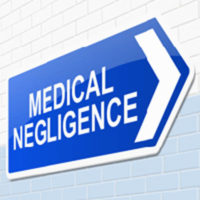Study Highlights the Frequency of Medical Errors
June 20, 2019 In an article published in the Journal of General Internal Medicine, researchers from Johns Hopkins University found that health care providers tend to underestimate the rate of diagnostic errors, and often fail to recognize the impact that diagnostic testing has on patients. While diagnostic uncertainty is not uncommon and certain diagnostic errors are an unfortunate reality, physicians should remain vigilant in their approach to improving diagnosis. According to researchers from Yale University School of Medicine, there is a significant amount of evidence that suggests physicians should be doing a better job at diagnosing patients accurately and in a timely manner.
In an article published in the Journal of General Internal Medicine, researchers from Johns Hopkins University found that health care providers tend to underestimate the rate of diagnostic errors, and often fail to recognize the impact that diagnostic testing has on patients. While diagnostic uncertainty is not uncommon and certain diagnostic errors are an unfortunate reality, physicians should remain vigilant in their approach to improving diagnosis. According to researchers from Yale University School of Medicine, there is a significant amount of evidence that suggests physicians should be doing a better job at diagnosing patients accurately and in a timely manner.
In a 2015 report by the National Academy of Medicine (NAM) entitled, Improving Diagnosis in Health Care, diagnostic errors were identified as a common problem affecting patient safety. Researchers surveyed both residents and attending physicians from nine internal medicine training programs in Connecticut to determine how clinicians diagnose patients, and how they respond when a diagnostic error has been made. Seventy percent of respondents said that time constraints during the diagnostic process impacted their ability to make a diagnosis. Close to half of the physicians in inpatient and outpatient settings responded that they felt diagnostic uncertainty daily.
Regardless of the diagnostic challenges that the physicians faced, many said that they did not often consider the advantages or the risks of diagnostic testing and the impact it had on patients. Most physicians assumed that diagnostic errors only occurred only once a month or less, even though clinicians had a high rate of diagnostic uncertainty. However, according to the NAM report, diagnostic errors occur in almost 15 percent of patient encounters.
Common Causes of Diagnostic Errors
The researchers found that diagnostic errors were caused by the following:
- History
- Assessment
- Change in patient status
These results suggest that inpatient and outpatient physicians need to be more aware of diagnostic uncertainty and diagnostic errors. To fix the problems that lead to diagnostic errors, including inadequate history taking and physical examinations, systematic changes need to be made to the medical education system, as well as in clinical practice. Researchers at Johns Hopkins University said that they recently completed a study where first-year internal medicine interns completed nine hours of simulation-based training in the diagnosis of dizziness. After completing the training, the first-year students outperformed the graduating third-year residents, which suggests that improving the diagnostic process should be a moral, professional, and public health imperative.
Baltimore Medical Malpractice Lawyers at LeViness, Tolzman & Hamilton Seek Justice for Victims of Medical Errors
If you were injured or your health was compromised while under the care of a health professional, you are urged to contact the highly skilled and experienced Baltimore medical malpractice lawyers at LeViness, Tolzman & Hamilton. We will determine who is responsible for jeopardizing your health and hold that person liable for your injuries. Our dedicated and compassionate team will protect your legal rights and ensure that you receive the maximum financial compensation you deserve. To schedule a free, confidential consultation, call us today at 800-547-4LAW (4529) or contact us online.
Our offices are located in Baltimore, Columbia, Glen Burnie, and Towson, allowing us to represent medical malpractice victims in Maryland, including those in Anne Arundel County, Baltimore County, Carroll County, Harford County, Howard County, Montgomery County, Maryland’s Western Counties, Prince George’s County, Queen Anne’s County, Southern Maryland, and the Eastern Shore, as well as the communities of Catonsville, Essex, Halethorpe, Middle River, Rosedale, Gwynn Oak, Brooklandville, Dundalk, Pikesville, Nottingham, Windsor Mill, Lutherville, Timonium, Sparrows Point, Ridgewood, and Elkridge.






